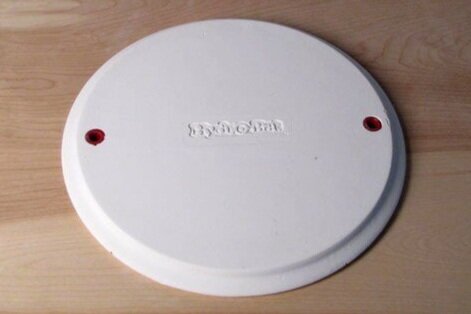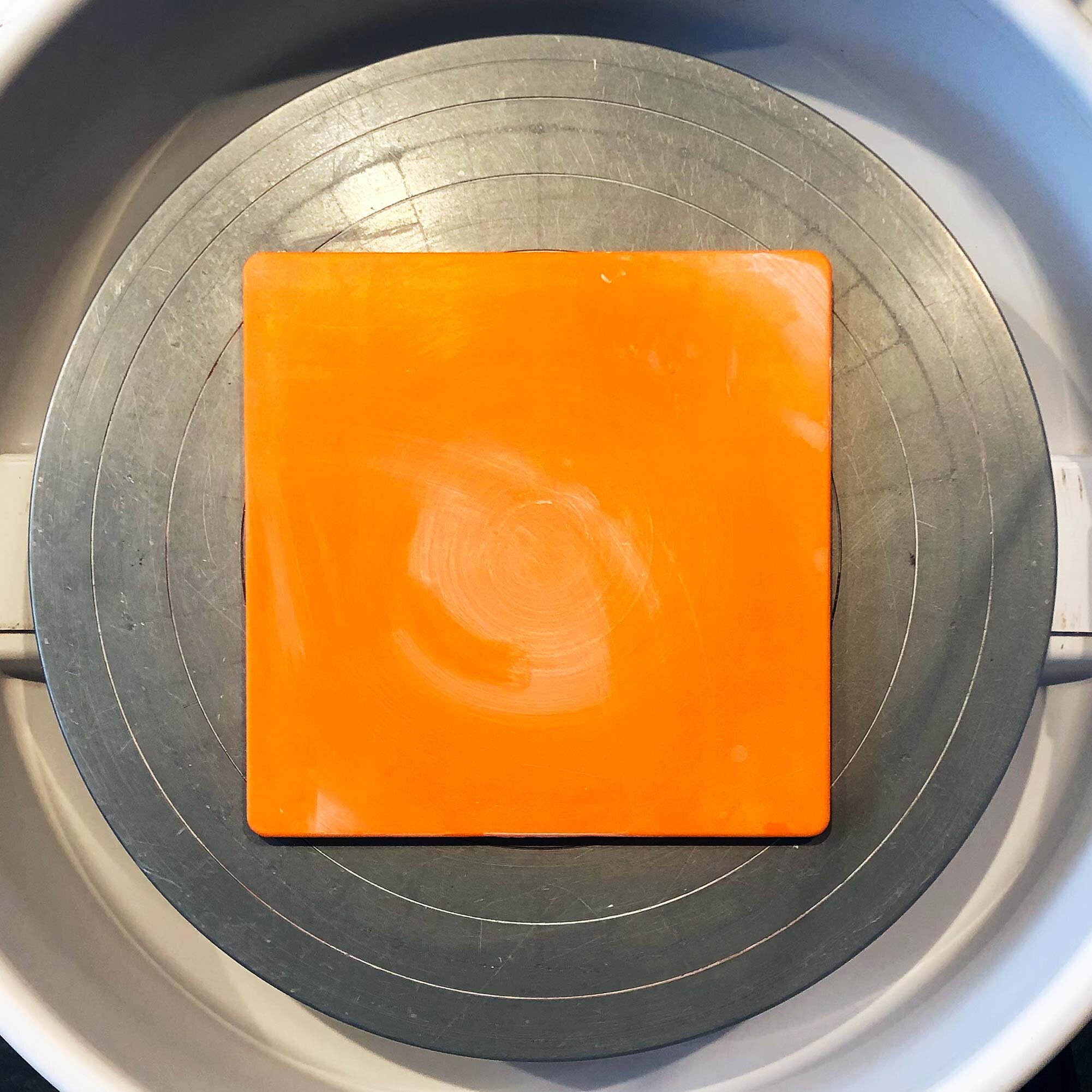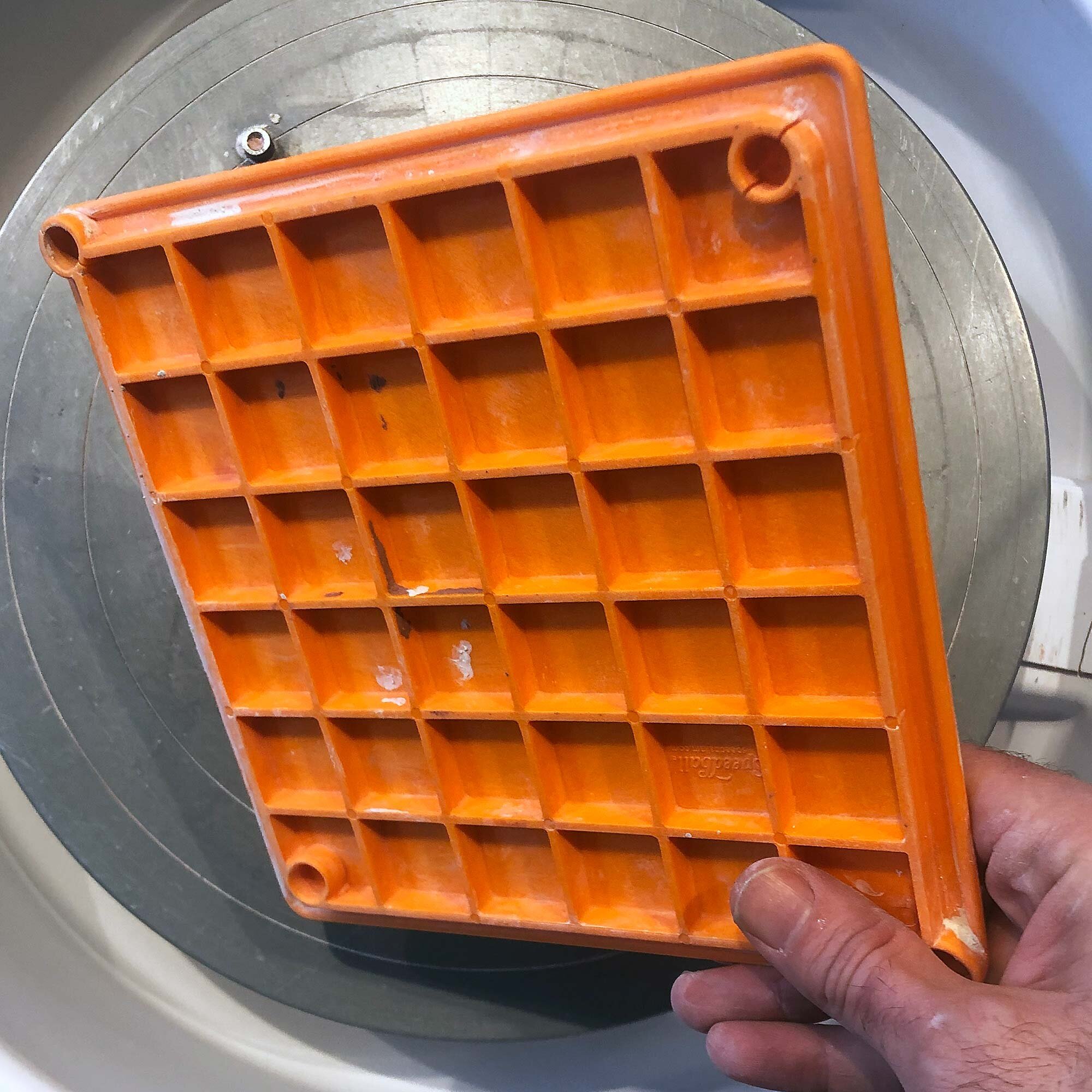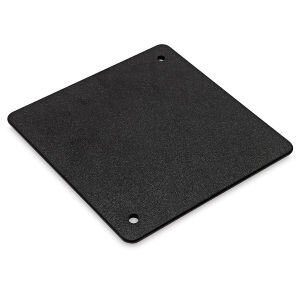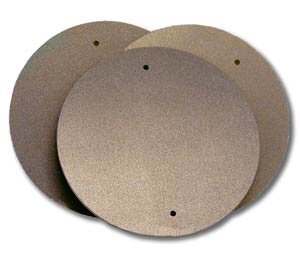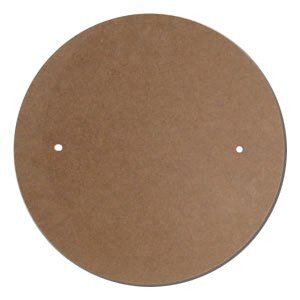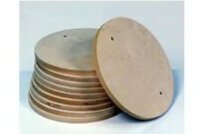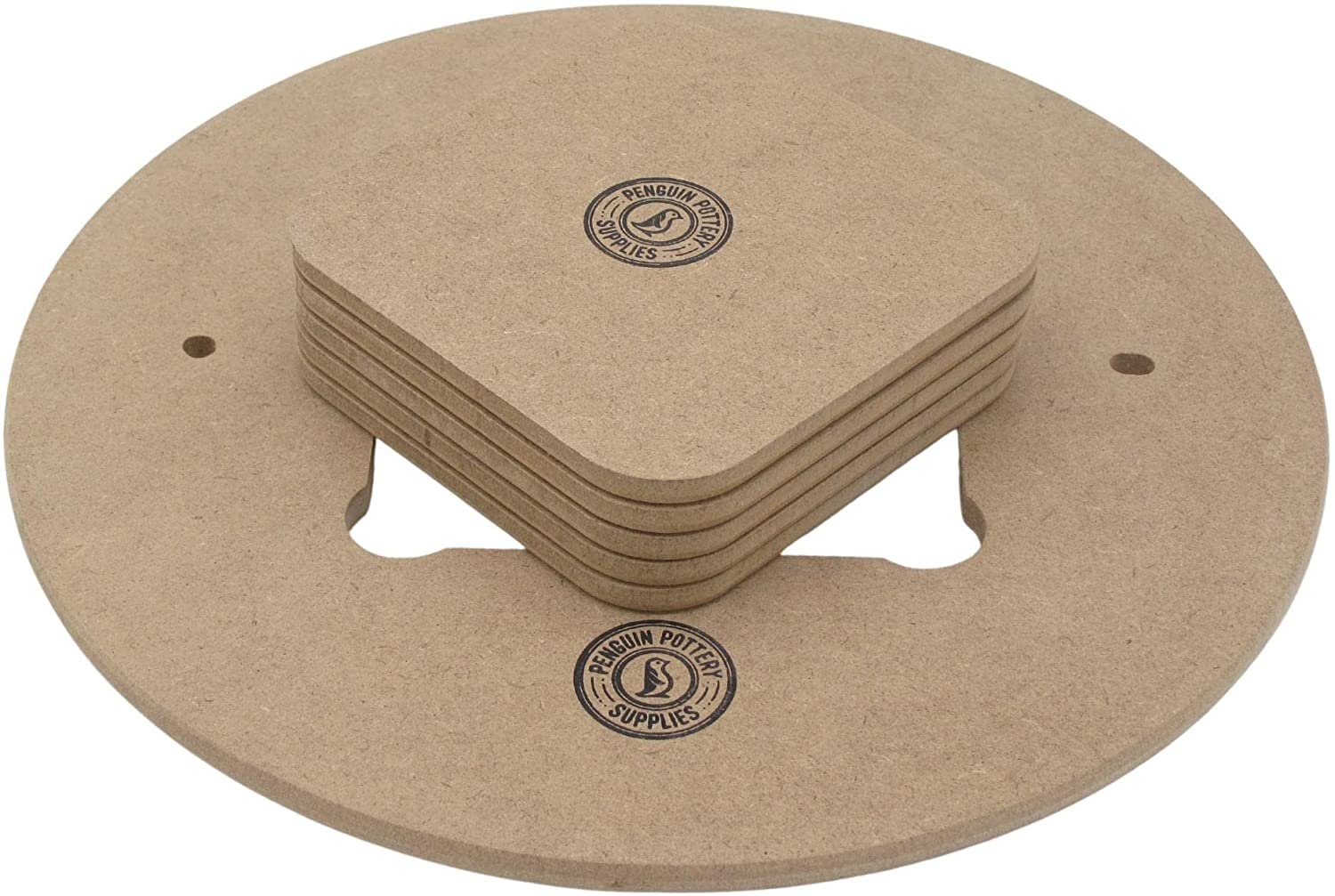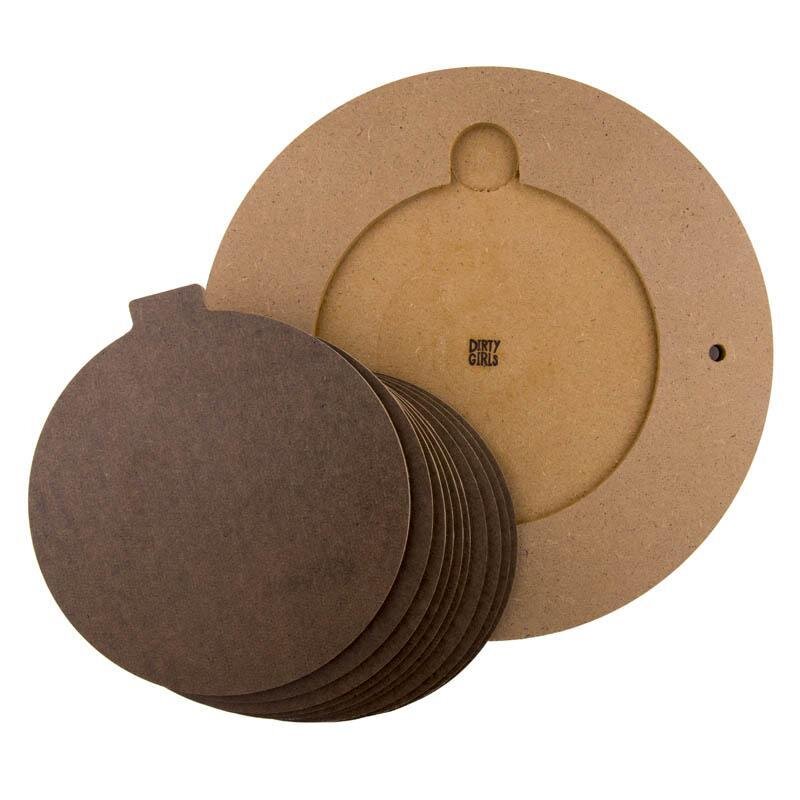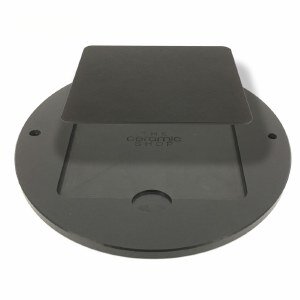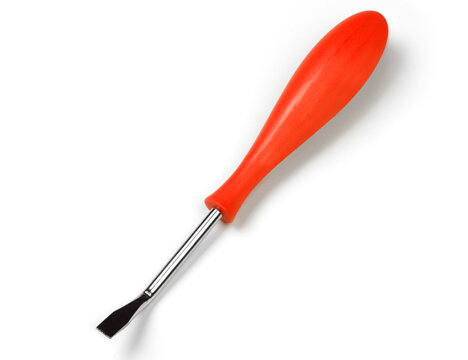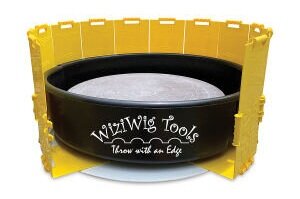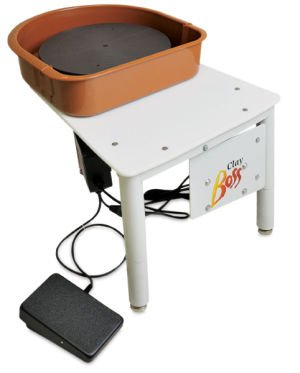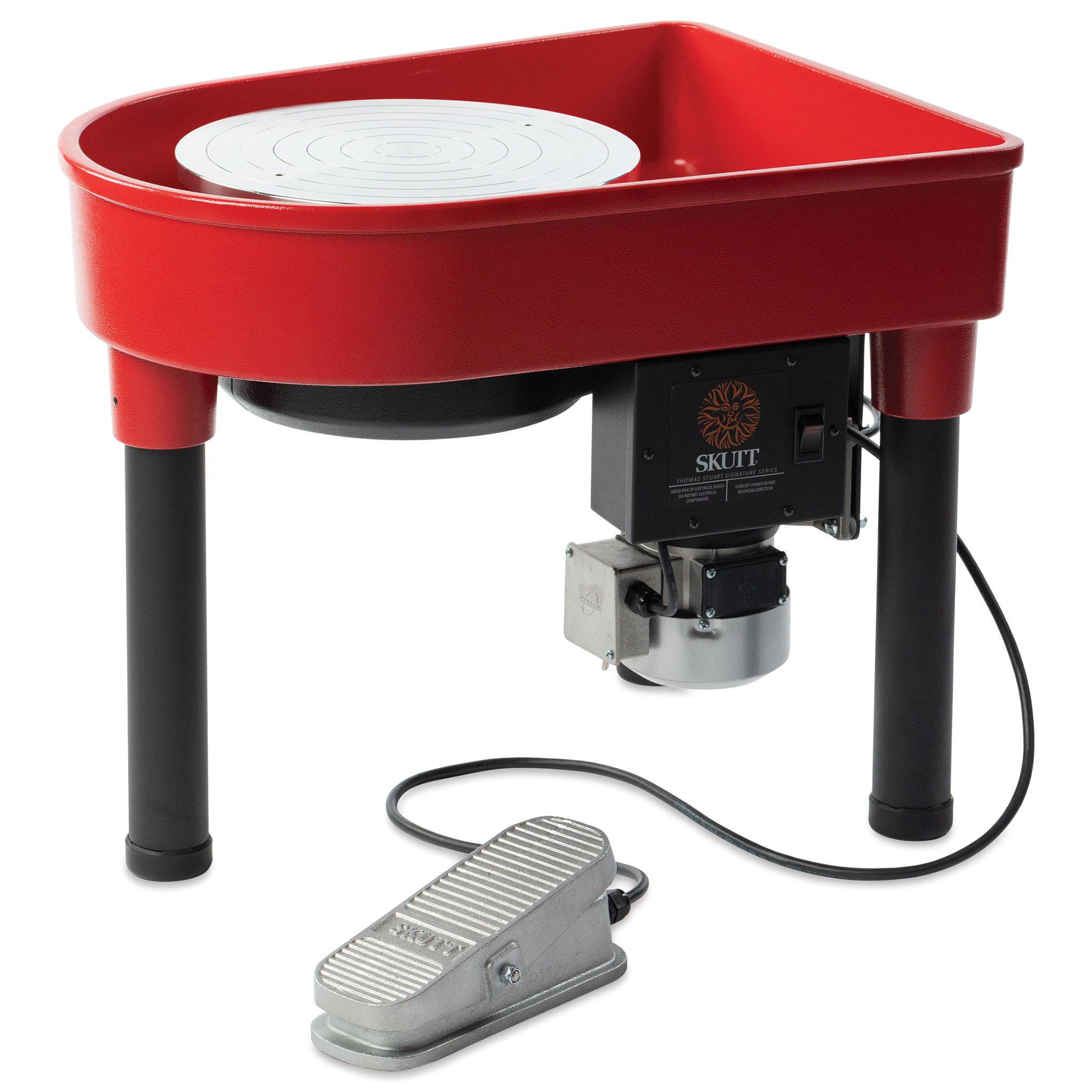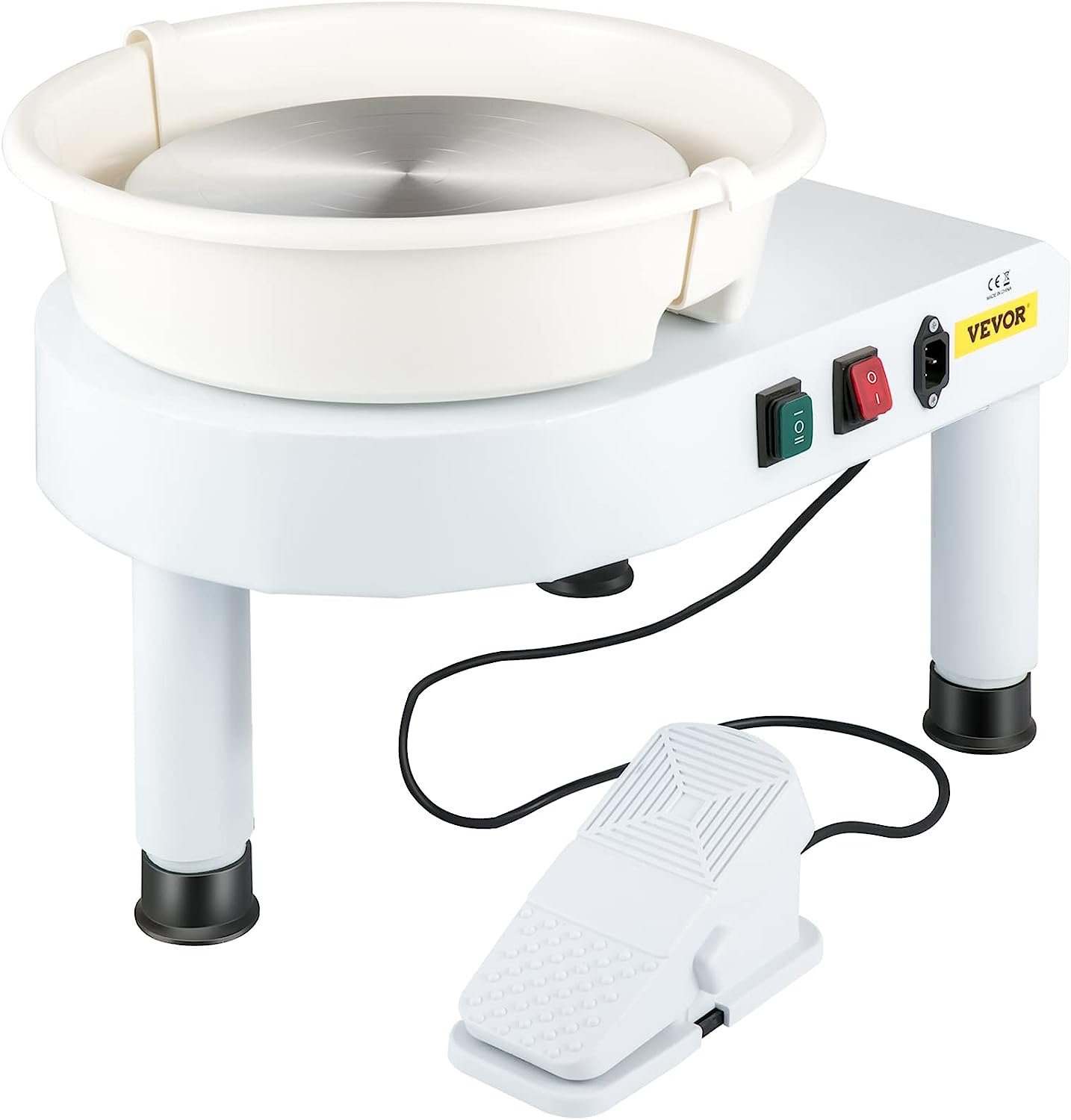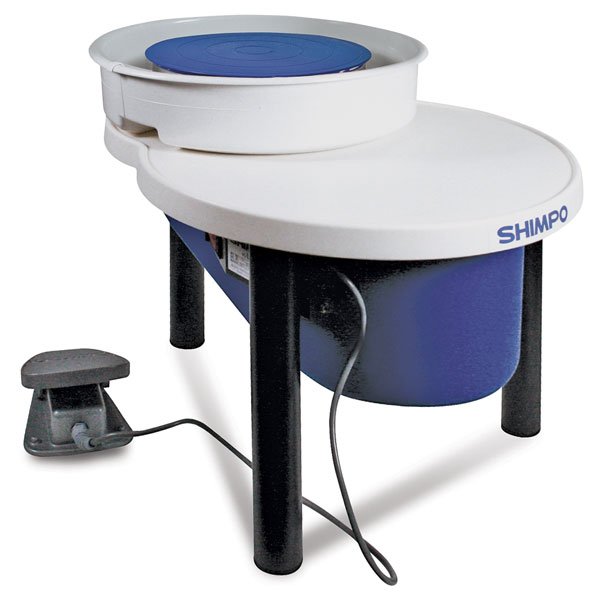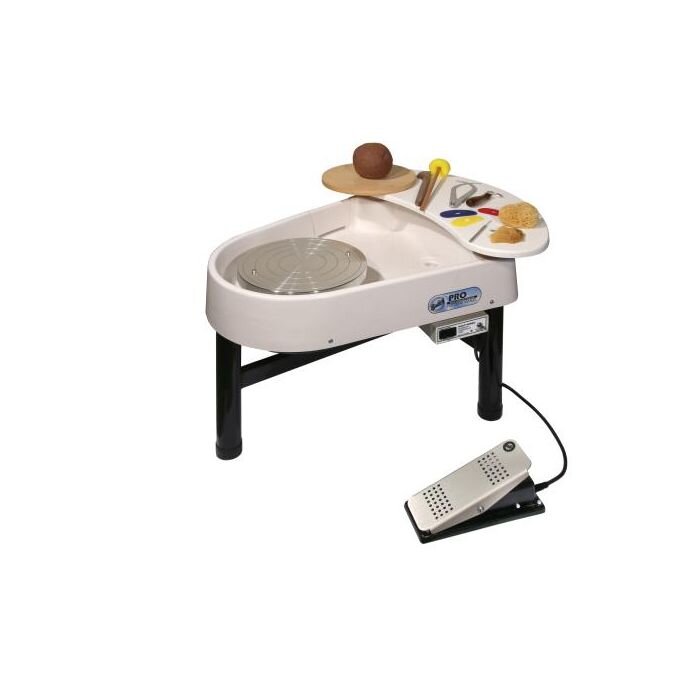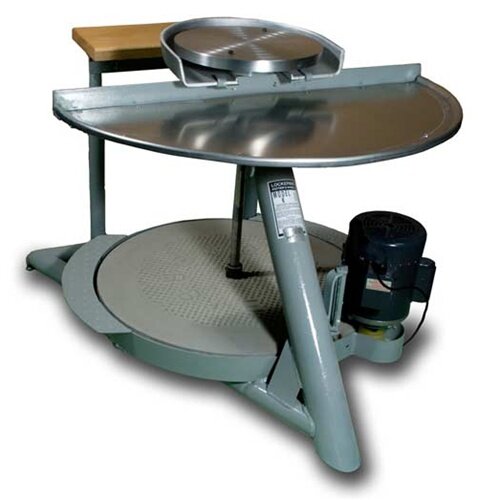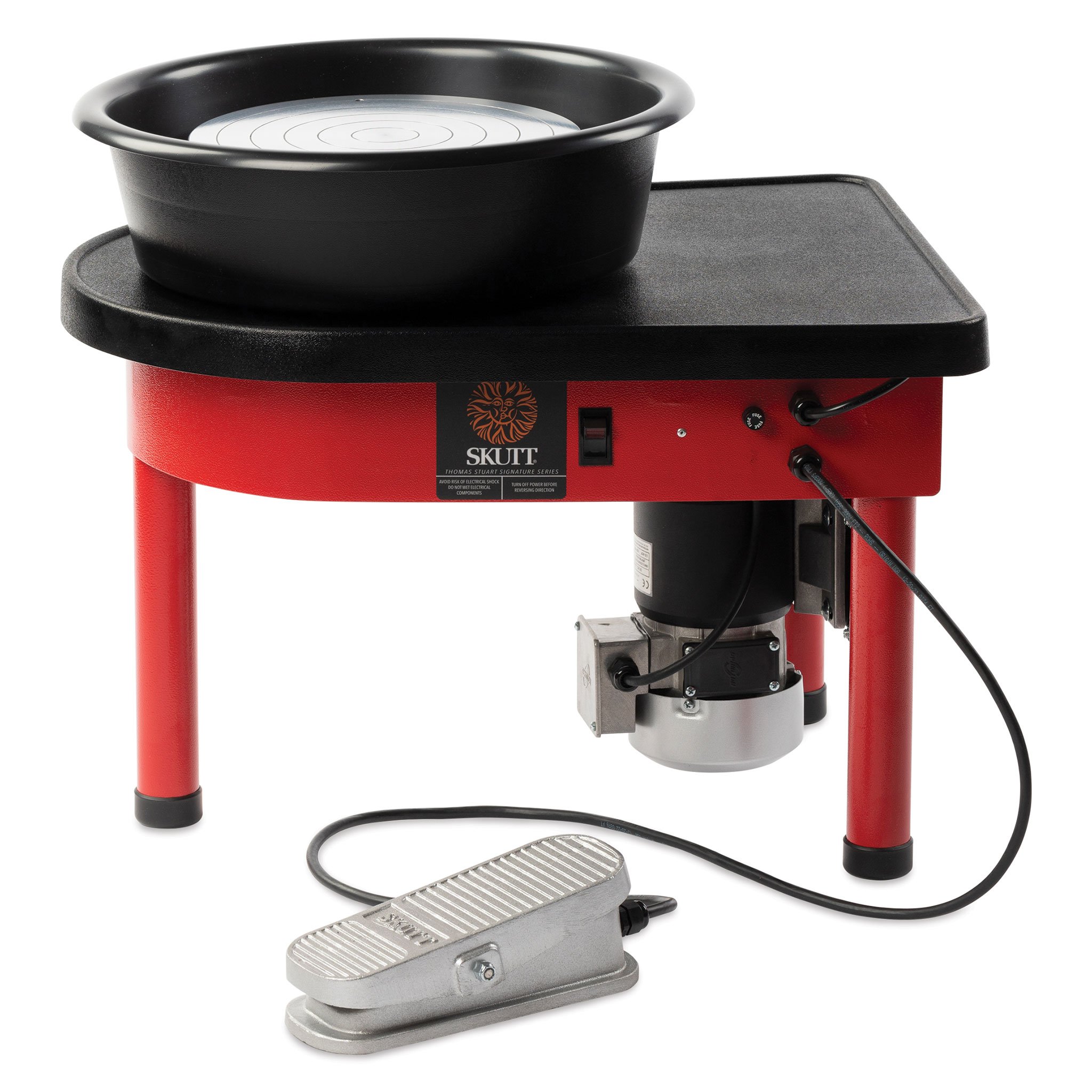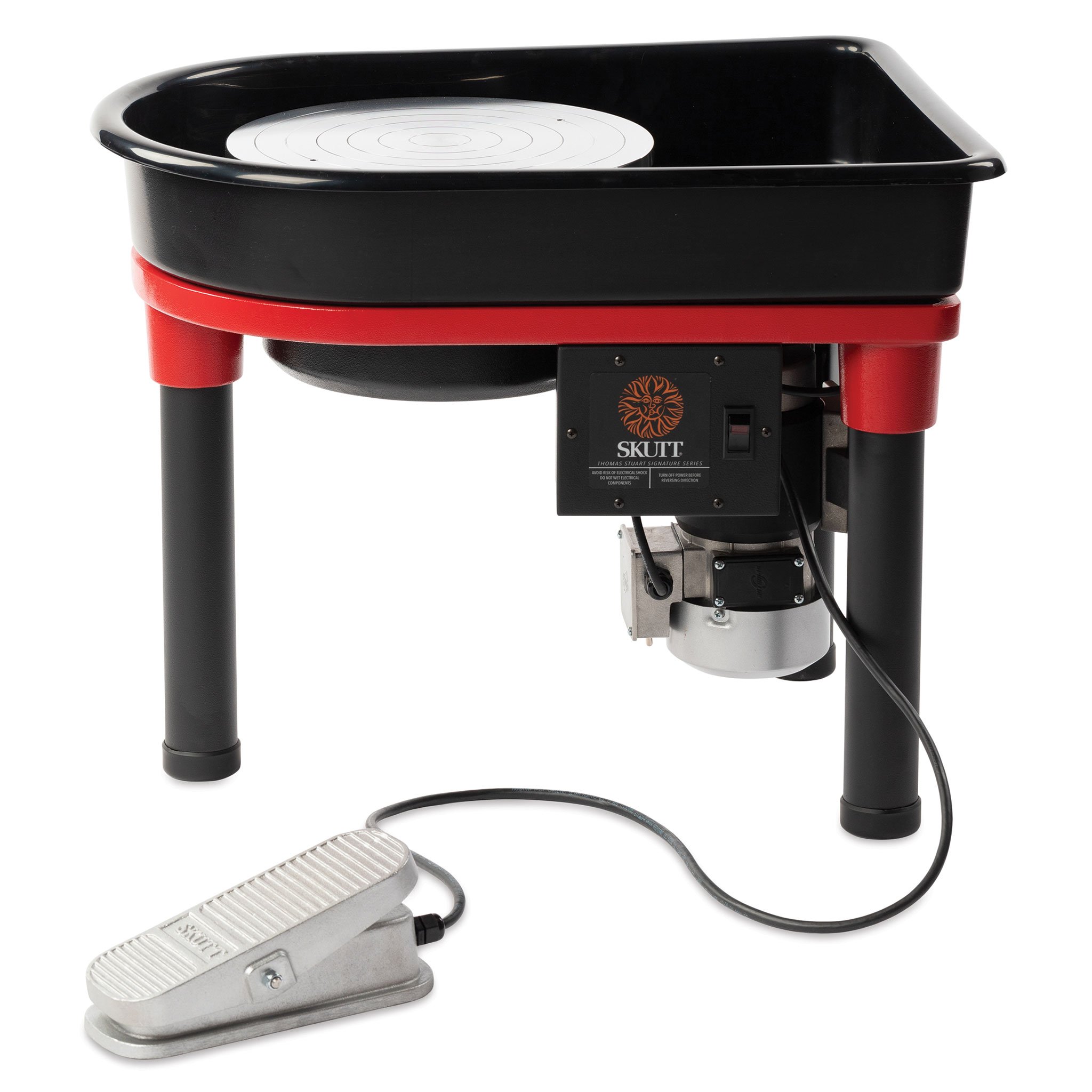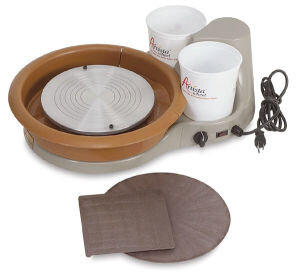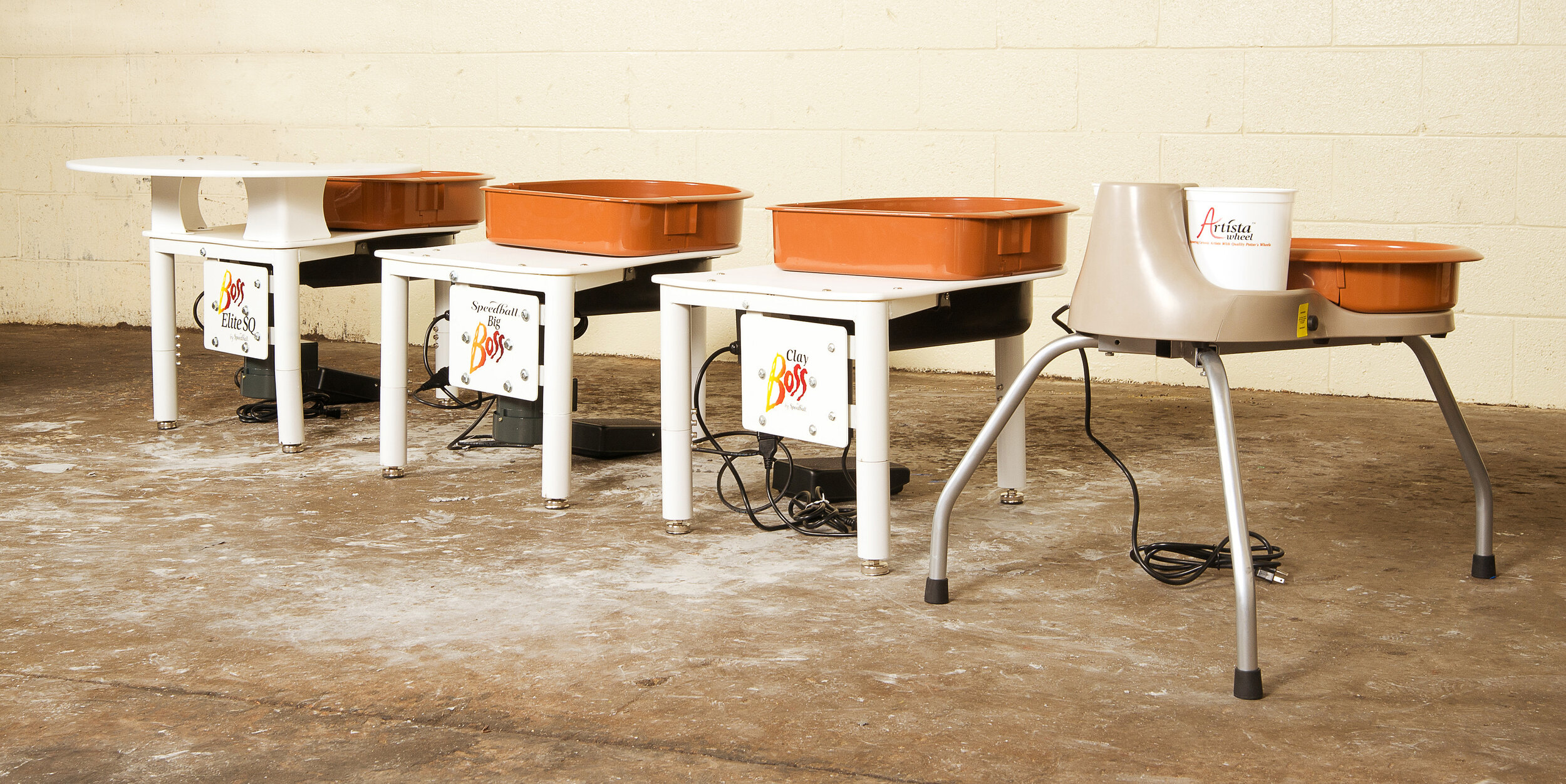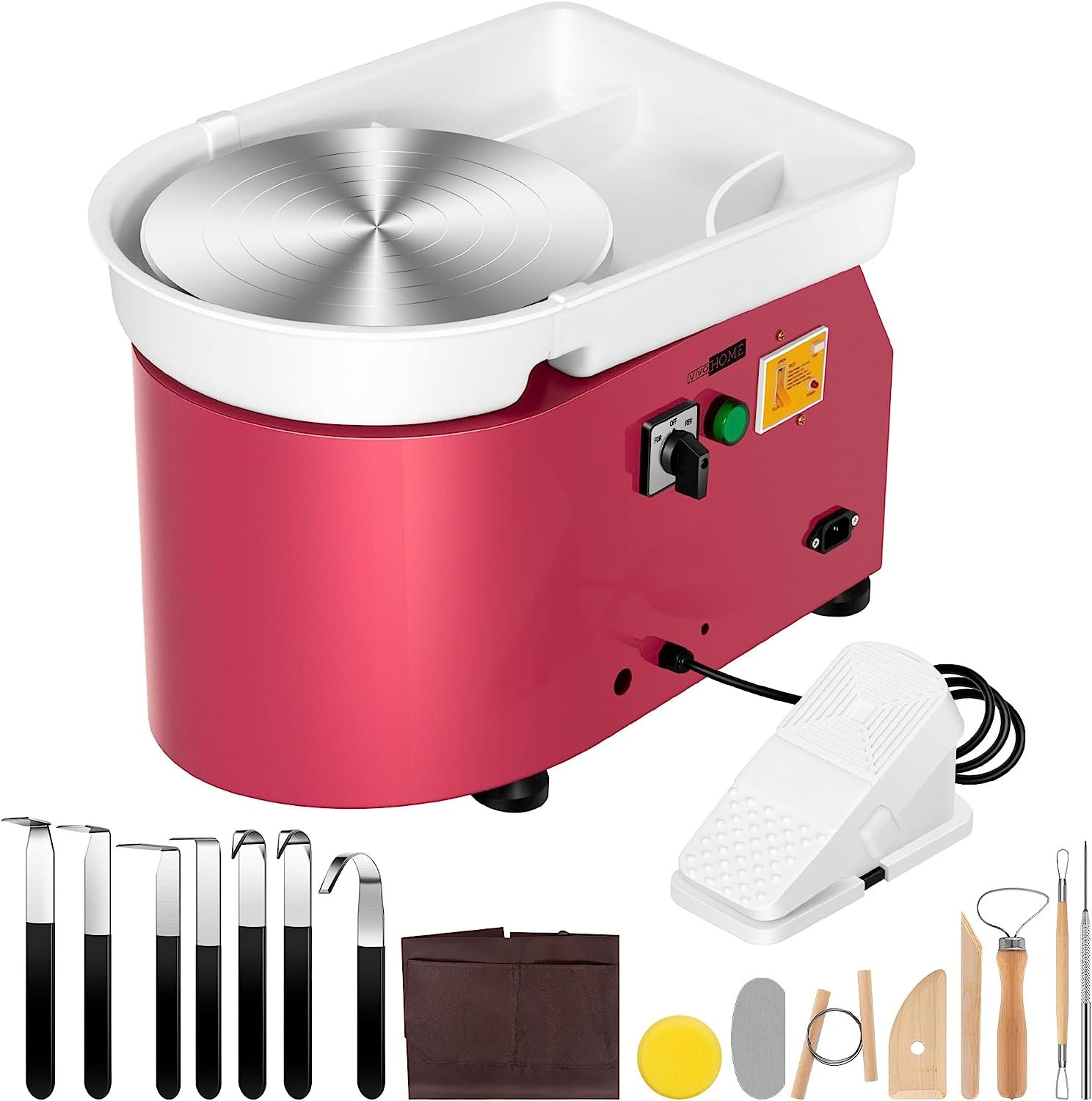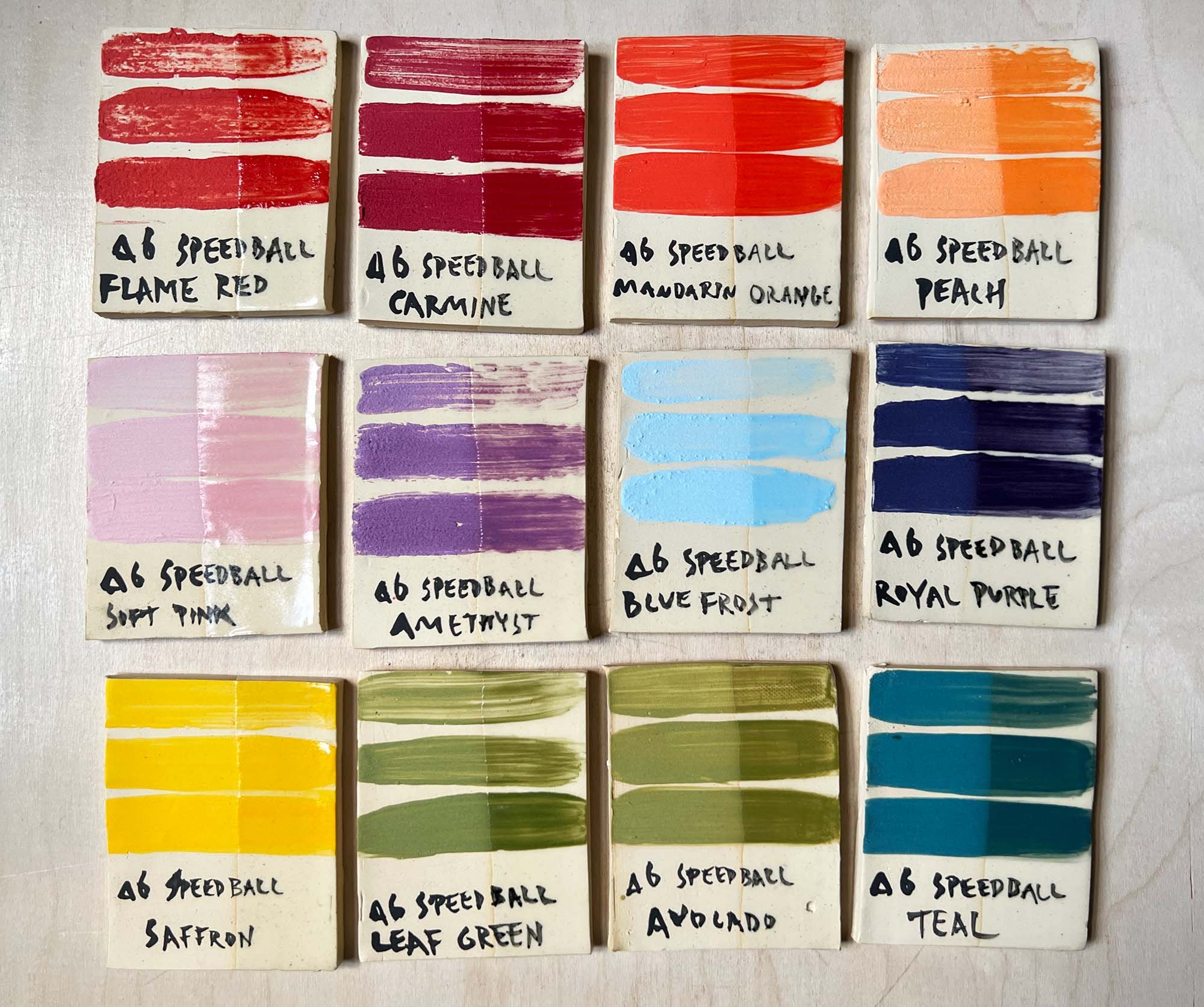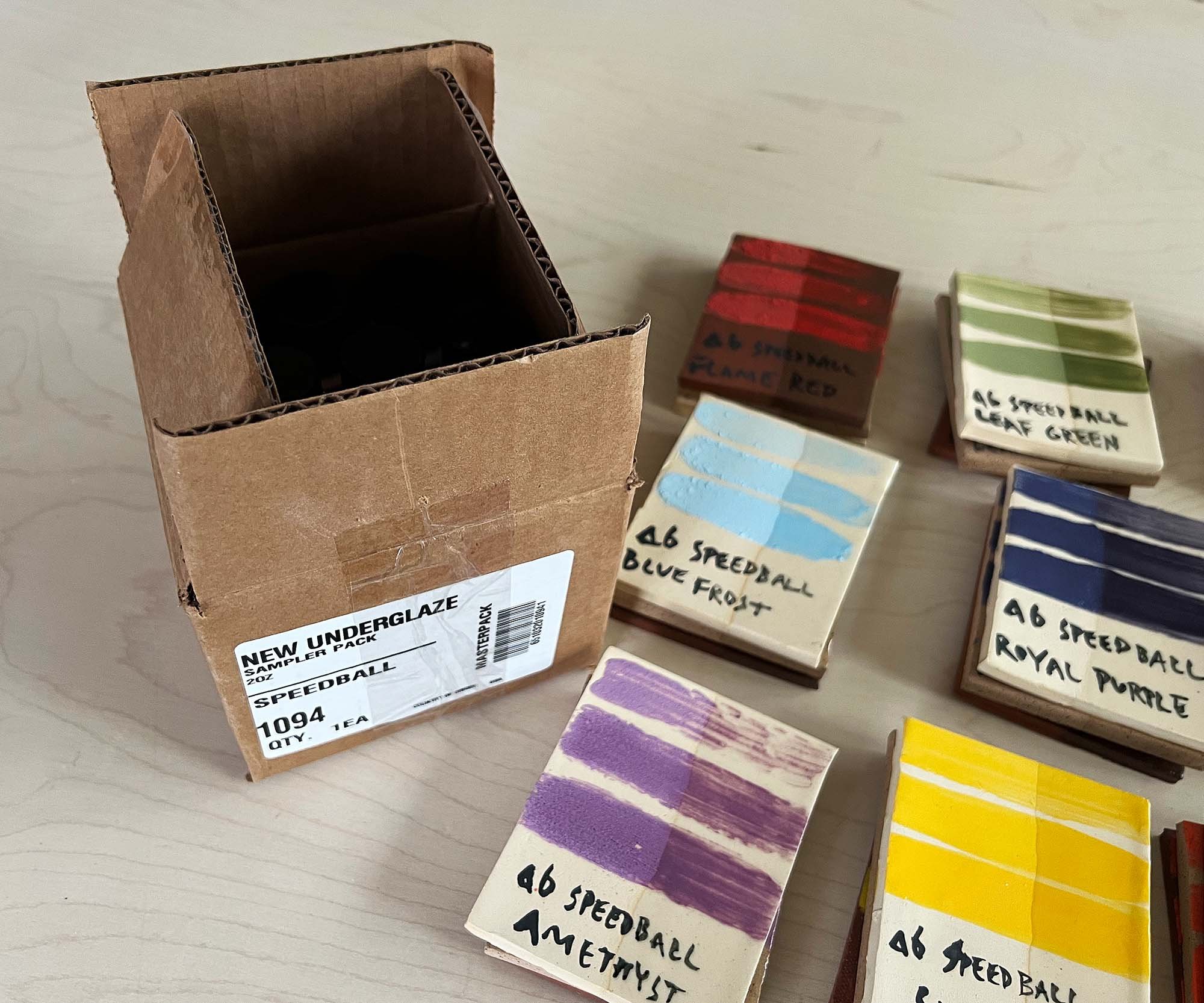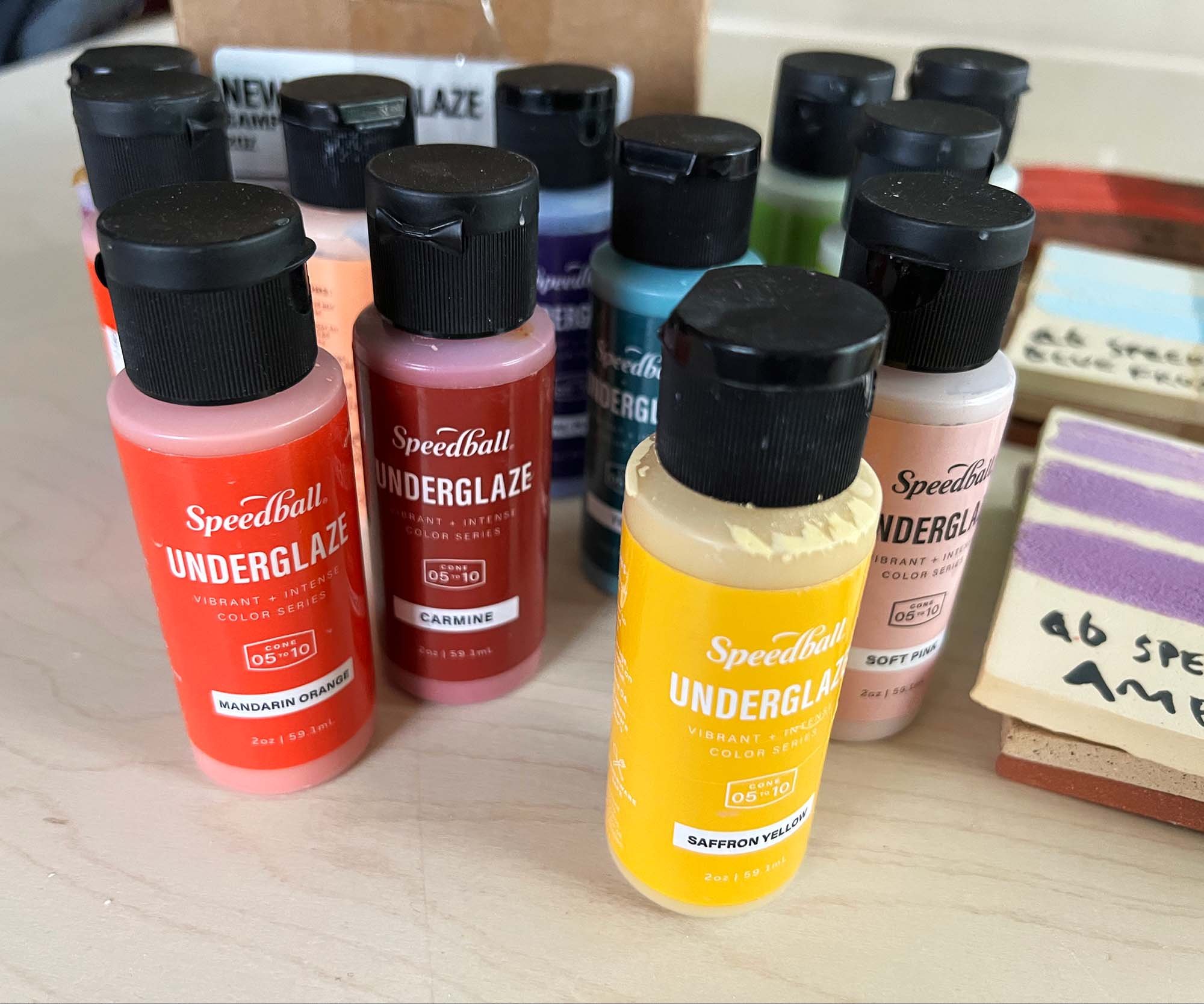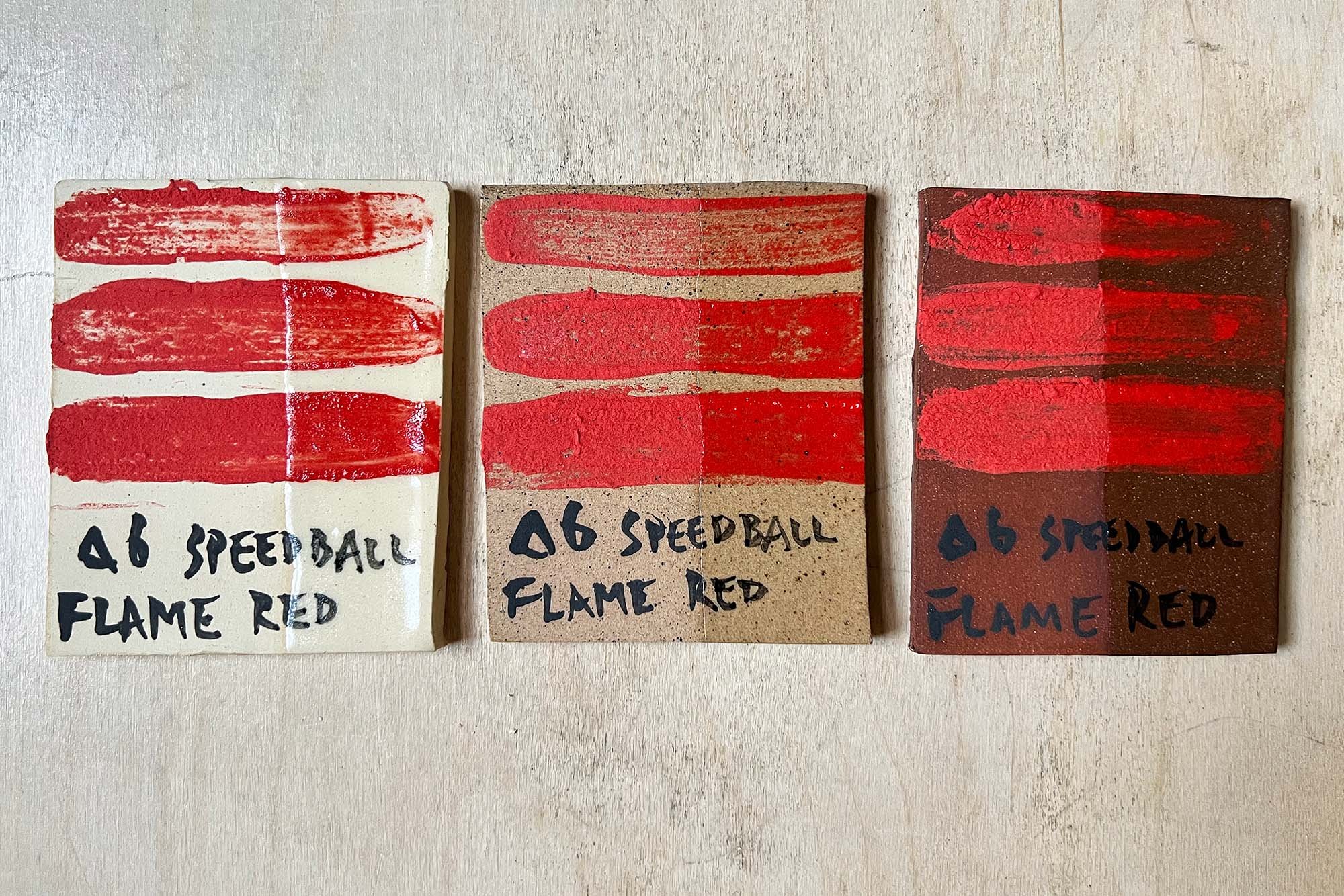Updated for 2025
This is a complete guide to all the different types of pottery wheel bats on the market, including different materials, bat systems, and assorted tools that are useful with bats.
Bats are available in various sizes and a variety of materials, including plaster, plastic, medex, MDF, and tempered hardboard such as Masonite. In addition to individual bats, there are also bat systems with inserts that can speed up the throwing process.
This post will attempt to cover all the bats available on the market, explain the options, and help you pick the right bats for your studio. This guide is based on more than 20 years of personal experience with pottery and wheelthrowing, including managing a variety of studios and using all sorts of different bats.
A 12” Speedball Plastic Bat on a 14” wheel head.
TOP PICK: Speedball Plastic Bats
The top pick for most studios are Speedball Plastic Bats. Available in 3 sizes and a variety different colors, they have a lip that makes picking up and removing from the wheel a breeze, they don’t warp, and they are long-lasting.
Injection molded, all the bats (even the square!) have universal 9” and 10” pin spacing. They are easy to clean and store, and a good value for the money.
One tradeoff is that plastic bats are not absorbent. Absorbent bats, such as Hydrobats, are a definite upgrade but they often cost almost twice as much. But given the price, durability, and all-around functionality, the Speedball plastic bats definitely have a place in a lot of studios.
Speedball Plastic Bats
7 1/2” square, $8-$10
12” round, $11-$13
14” round, $12-$15
The bottom of a 12.5” HydroBat, note the red rubber bat pin grommets.
UPGRADE PICK: Hydro-Bats
Hydro-Bats are made from Hydro-Stone, a gypsum compound that is harder than plaster, and feature rubber grommets cast into the bat. Most have 10” pin spacing but there are other sizes as well. The absorbent Hydro-Stone virtually eliminates the need to cut your works off with a wire, and it is more resistant to chipping and scraping than plaster. They are thicker than plastic bats, about 1/2” thick, but if you have the room, these are a joy to use.
Hyrdo-Bats are manufactured by The Ceramic Shop in Philadelphia, PA and are available there and from a variety of other ceramic suppliers.
Hydro-Bats
Available in almost 20 sizes both flat and shaped like plates, bowls and platters,
Prices range from $10 to $50 each
As an example, the flat 12.5” bats are around $21
About Bats:
Bats are useful for a variety of reasons: they provide a platform to pick up and move your work as it is drying, they protect the wheelhead, and they might even make clean-up easier. You can throw directly on the wheel head, but for wide or flat forms, you will definitely need a bat to successfully move it off the wheel.
Scroll down for a full review of a all types of bats.
Table of Contents:
Top Pick: Speedball Plastic Bats
Upgrade Pick: HydroBats
Amaco Plasti-Bats
Laguna Plaster Bats
Masonite Bats
Medex Bats
Bat Systems
Bat Accessories
Summary
The 7.5 inch square Speedball Plastic Bat
Top Pick: Speedball Plastic Bats
The bottom of the Speedball Plastic Bat.
Speedball Plastic Bats are injection molded and available in three sizes: 14 inch round, 12 inch round, and 7.5 inch square. All feature universal 9 and 10 inch pin spacing (yes, even the square!). They have a grid of support on the underside, are about 1/4” thick, and do not warp. They don’t chip, but they can be cut by sharp knives.
A side view of the lip on the Speedball Plastic Bat.
The best feature of these bats is the lip on the side. This makes them very easy to remove, as opposed to the Amaco Plasti-bats, which sit flush with the wheel head. The one drawback is with the pin opening on the bottom, you can find yourself hunting to match the bat up with pins.
These bats can be stored horizontally or vertically. The most interesting is the space-saving 7.5 inch square bat, which can really reduce storage space if you are making a variety of bowls or platters.
They are available in a variety of different colors, including brown, blue, green, orange, teal, purple, pink, and red.
Speedball Plastic Bats
7 1/2” square, $8-$10
12” round, $11-$13
14” round, $12-$15
The 12 inch Speedball Plastic Bat on a 14” wheel head.
The 14 inch Speedball Plastic Bat.
Upgrade Pick: Hydro-Bats
The bottom of a 12.5 inch diameter Hyrdo-Bat, with the red rubber grommets that fit on standard 3/8” bat pins.
Hydro-Bats are a line of bats made from HydroStone, a U.S. Gypsum product that is harder and stronger than plaster but still absorbent. They are widely available, but are manufactured by the team at The Ceramic Shop in Philadelphia. In addition to the absorbent surface, the bats have a lip for easy removal, and rubber grommets that easily fit over bat pins.
The complete line has flat bats, hump bats, and a variety of plate and platter shapes. The flat bats have two sizes of pin spacing: the standard 10” pin spacing comes in diameters ranging from 12.5 to 28 inches, and the smaller 6” pin spacing has bats that are 8.5 and 10 inches in diameter. The 6 inch pins might fit tabletop wheels or there is also a 10” to 6” adapter available.
Hydro-Bats do take up more space, they are about 1/2 inch thick. And if they become saturated with water, they won’t be very useful until they dry out. But the absorbency of the HydroStone makes these a great option for throwing bigger forms, as you will have more even drying on all sides of the vessel. When the clay pulls away from the bat without sticking, your ware will be at the perfect dryness for trimming.
Hydrobats will chip or take cuts from very sharp knives, but from experience I can say that you can drop them without much risk of them breaking (you might get some chips though.) Overall, these are my favorite bats to use because they make trimming much easier, and they are stronger and easier to use than homemade plaster bats, or other absorbent bats without grommets. They do cost more, but it’s worth it.
Hydro-Bats
Available in almost 20 sizes, prices range from $10 to $50 each.
Flat 12.5” bats are around $21
Amaco Plasti-Bats
Amaco Plasti-Bats are available in 12” and 14” diamater.
Amaco Plasti-Bats are 1/4” thick hard plastic with holes for bat pins drilled through. Available in 14 and 12 inch diameter, and 9 inch square, the holes are a universal 10 inch spacing. It would be simple to drill new holes if needed for alternative pin spacing. Simple, easy, and effective, these are functional bats that will get the job done.
There is also a 9” square Amaco Plasti-Bat, which also has holes for 10” pin spacing.
With no ribs or lip, either side can be used and cleanup is very easy. As with all plastic bats, they are non-absorbent.
The drawback with these is that while they are easy to attach to the wheel head because you can see the pin holes, the lack of a lip makes removal a bit hard. Some sort of tool or knife is needed to wedge one side of the bat up, so that your fingers can get underneath. Without the ribbing, these can warp if stored incorrectly. It’s best to store these horizontally, but they can be stored vertically as long as pressure is not applied.
These bats used to be some of the cheapest on the market, but now they cost almost as much as Hydro-Bats, making them a less attractive pick.
Amaco Plasti-Bats
9” square, $16.75
12” round, $25
14” round, $30
Medex Bats
Medex Bats are a made by a variety of manufacturers including Speedball and Penguin Pottery. Medex is a 3/8” thick, engineered particle board that is made with no formaldehyde. It’s smooth, dense, and water resistant. Think of it as thicker Masonite.
With Medex, avoid soaking or long-term ware storage, or the bats may warp and/or grow mold. But if kept clean and cycling through your studio, these bats should stay flat and are cost-effective. They are more prone to warping than plastic bats, but if used correctly, they are a cost-effective option.
Potters choose these over plastic bats as the absorbency of the material will help your ware dry more evenly. Depending on the vendor, these range from half the price of a Hydro-bat to just a few dollars less, so it might be worth it to pay extra and upgrade to the Hydro-bats
Speedball Medex Bats
12” round, $12-$17
14” round, $14-$20
16” round, $17
Penguin Pottery Medex Bats
9” square, set of 5 bats: $45 ($5 each)
12” round, set of 5 bats, $65 ($13 each)
Masonite Bats
A 12” Masonite bat with universal 10” bat pins.
Masonite bats are made by a variety of manufacturers. They are affordable, thin, and can be real workhorses if used correctly. Masonite is a 1/4” thick, tempered, water-resistant hardboard that is usable on both sides and is slightly absorbent, making it ideal for helping pots dry. Their affordability also makes these common in production pottery, but if they stay wet for a long time (such as long-term storage of wet ware) or are soaked, they will warp, break down, or get moldy. They will also scratch if metal tools are used too aggressively on the surface.
The best way to use masonite bats is to remove the pot when it is ready for trimming, then clean the bat with a minimum of water, and allow the bat to dry before using again. Also, never soak a Masonite bat or flex it when wet, and store them horizontally. With care, Masonite bats can last a long time.
Masonite bats, generic manufacturers
12” round, around $5 per bat (usually sold in multi-packs)
Baltic Birch / Tiger Ply Plywood Bats
Plywood bats
Bailey Ceramic Supply in New York makes 3/4” thick Plywood Bats in either Baltic Birch or Tiger Ply. (Baltic Birch Plywood is hard to come by because of the war in Ukraine so they have switched to Tiger Ply.) Absorbent like plaster, these bats are lighter than plaster or Hydro Stone, and won’t break or chip if you drop them. They are also more rigid for larger forms—plastic gets floppy at larger diameters. You could make your own plywood bats but these are predrilled and ready to go.
Like Masonate / Medex / hardboard, plywood will warp and get moldy if clay and ware is stored on them for a few weeks. Clean up with a minimum of water, and remove your piece as soon as you are able. It’s also a good idea to let these dry out in between uses. If properly cared for, plywood bats are long lasting.
Plywood bats
12” round to 29.5” round, $17 to $74
Bat Systems
Bat systems feature a large bat and smaller inserts that can be swapped out. The idea is to save space on the shelf, and not have to bother attaching bats over and over. It’s particularly ideal for smaller work such as mugs, and small cylinders and bowls. The downside is that you commit to one manufacturer if you need extra or replacement bats. Some potters make their own version of these using a drill and a jigsaw. Only commit to a bat system if you know it’s the right system for you, the size of work you make, and your studio. It can be a definite space saver, though, so it is worth considering if it makes sense for you..
The Penguin Pottery Heavy Duty Bat System is made from MDF.
Penguin Pottery Heavy Duty Bat System
This system features a 14” circular bat with 6 inch square inserts, all made of Medex / MDF. The pins on the large bat are set for a 10” bat pin spacing, and the system is made in the USA. The inner bats are easily removable via four finger holes.
The Penguin Pottery Bat System comes with the 14” bat and 5 inserts, along with 2 pins.
Listed at $71
Dirty Girl Bat Systems
The Dirty Girl round bat system.
Dirty Girl tools makes two bat system, a square and round set. The large bat is 12.5”, and the smaller bats are 6.5 inches.
It’s not listed on the site, but it appears the larger bat is Medex or pressboard, and the inserts are thinner Masonite or some kind of tempered hardboard.
Dirty Girl Bat System
includes 10 bat inserts, $78
Snap Bat Throwing System
The all plastic Snap Bat system.
The Snap Bat Throwing System is an all-plastic option developed by The Ceramic Shop in Philadelphia. The large bat is 11.5” round and 1/2 thick, and the smaller bats 7 x 7 inches square and 1/4” thick.
Snap Bat Throwing System
comes with 5 inserts
Listed at $83
Generic Bat Systems
The WonderBat Square Bat System.
There are a variety of generic bat systems available on Amazon.
As with all the sort of generic “Amazon Brands,” these products seem to come and go, and are often direct copies of some of the bat systems listed above.
Buyer beware! These may be a great deal, or they might be a piece of junk.
Bat Accessories
There are a variety of accessories and add-ons that can help with bats and the throwing process.
Xiem Studio Tools BatMate.
Xiem Studio Tools BatMate
The BatMate from Xiem Studio Tools is a 12-inch diameter piece of synthetic fabric that can be placed in between a bat and wheel head to virtually eliminate any wobble, improving the accuracy of throwing and trimming. Many potters, however, wet the fabric and place it directly on a wheel head to use when trimming pots. Pots will stay put just by tension, without adding little balls of clay wadding. This saves time and works just as well.
It’s probably not necessary if you get Speedball Plastic Bats or Hydro-Bats, but it may be helpful for masonite or other bats that might have a slight warp. And it’s also a great tool for trimming small pots. At around $15, this is a tool that gets used all the time once it’s in a potter’s kit.
Xiem BatMate
12 and 14 inch diameters, $11-$14
Xiem Tools Bat Lifter
If you have bats without a lip, the Xiem Tools Bat Lifter will save your fettling knife or nails, helping you easily pick up one side of the bat. If you have Amaco Plasti-Bats, you definitely want one of these!
Xiem Tools Bat Lifter
$7-$15
WiziWig Tools Clay Shield
The WiziWig Tools Clay Shield.
The WiziWig Tools Clay Shield is a set of 14 flexible panels that will guard your throwing area from trimming and throwing splatters. Each panel is 4 1/4” wide, 8 3/4” tall, and has a base that slides under your splash pan. When combined, the Clay Shield will cover a 20 inch diameter. Coverage varies depends on set up and your wheel, but overall, this is a simple tool that can make a big difference in cleanup. It does require some set up and can get in the way, but if you’re working in tight quarters it can really help.
If this doesn’t seem right for you, some people tape newspaper, cardboard, or even flexible cutting boards to achieve the same ends.
WiziWig Clay Shield
$35-$37
Foam Trimming Bat
Foam Trimming Bats by StudioPro.
StudioPro and others make foam trimming bats. These are foam glued to a bat. You can make your own, but StudioPro offers two options: one has 1/4 in foam for smaller pots, and another has 3/4” foam for heavier or uneven pots. Simple, easy and time saving, if you think a foam bat is going to help you, it probably will.
StudioPro Foam Trimming Bats
14” or 18” round
1/4” or 3/4” thick foam
Brent Batmobile
The Brent Batmobile is a mobile cart perfectly designed to hold scores of round bats. It can accommodate bats that are 12 to 14 inches tall, and has locking 4 inch rubber casters. It’s not cheap—you might try a DIY option—but Brent’s entire product line is built to withstand heavy use in a production or busy academic studio. It will last forever.
Brent Batmobile Bat Cart
$790
Grinding Discs
There are now a variety of grinding discs that fit right on your wheel head. A great solution—you’ve already got this spinning motor with a waterproof splash pan! Some grinding discs have sticker backs that can be used with a bat. If you’re interested in this, a good place to start is with our DIY grinding disc tutorial.
Summary
This post covered a variety of bats for use on the pottery wheel. There are bats available in plastic, HydroStone, plaster, Masonite and other hardboards, and even plywood. There’s also a variety of bat systems and other bat accessories. Overall, my favorite bat is the Speedball Plastic Bat for it’s easy to move lip and resistance to warping. Hydro-Bats are my favorite for absorbent bats.
What are your favorite bats?

